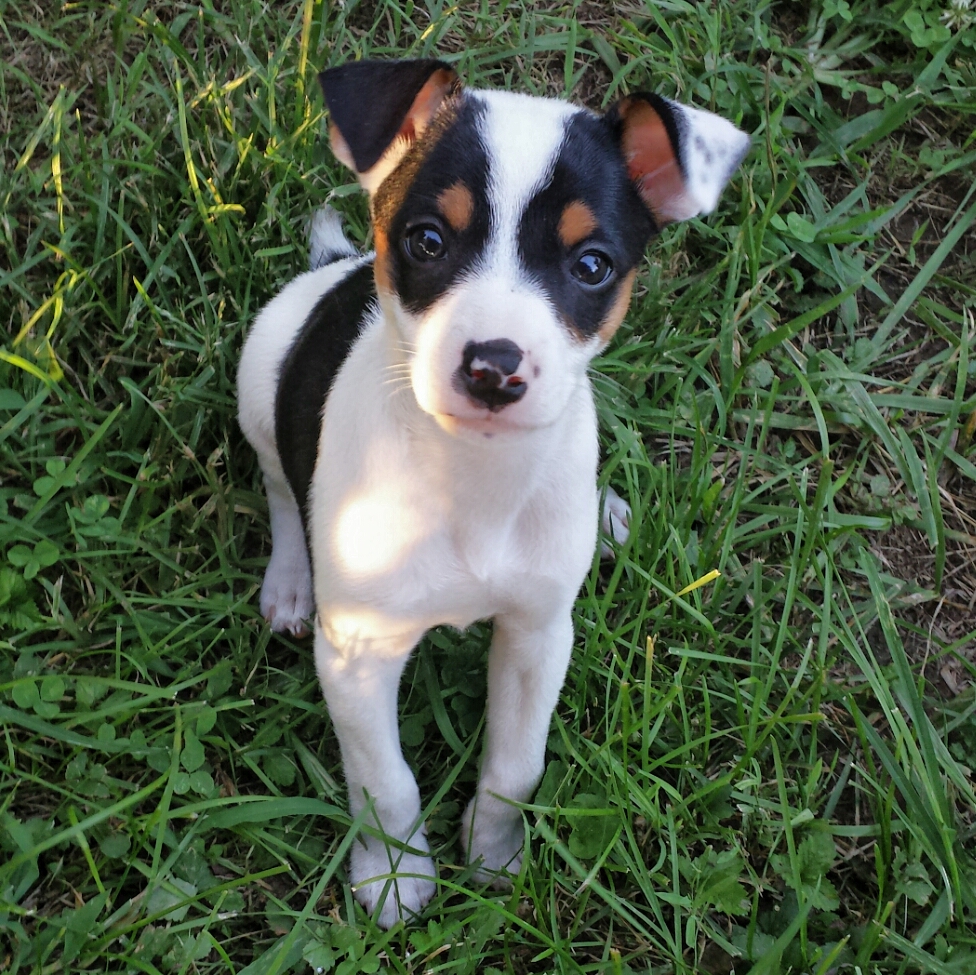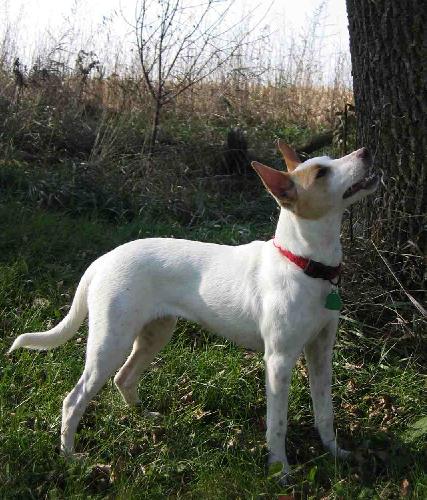
Before the Civil War, Abraham Lincoln wrote of the Mountain Feist in his poem, “The Bear Hunt,” See if you can spot it:
A wild-bear chace, didst never see?
Then hast thou lived in vain.
Thy richest bump of glorious glee,
Lies desert in thy brain.
When first my father settled here,
’Twas then the frontier line:
The panther’s scream, filled night with fear
And bears preyed on the swine.
But woe for Bruin’s short lived fun,
When rose the squealing cry;
Now man and horse, with dog and gun,
For vengeance, at him fly.
A sound of danger strikes his ear;
He gives the breeze a snuff;
Away he bounds, with little fear,
And seeks the tangled rough.
On press his foes, and reach the ground,
Where’s left his half munched meal;
The dogs, in circles, scent around,
And find his fresh made trail.
With instant cry, away they dash,
And men as fast pursue;
O’er logs they leap, through water splash,
And shout the brisk halloo.
Now to elude the eager pack,
Bear shuns the open ground;
Through matted vines, he shapes his track
And runs it, round and round.
The tall fleet cur, with deep-mouthed voice,
Now speeds him, as the wind;
While half-grown pup, and short-legged fice,
Are yelping far behind.
And fresh recruits are dropping in
To join the merry corps:
With yelp and yell,—a mingled din—
The woods are in a roar.
And round, and round the chace now goes,
The world’s alive with fun;
Nick Carter’s horse, his rider throws,
And more, Hill drops his gun.
Now sorely pressed, bear glances back,
And lolls his tired tongue;
When as, to force him from his track,
An ambush on him sprung.
Across the glade he sweeps for flight,
And fully is in view.
The dogs, new-fired, by the sight,
Their cry, and speed, renew.
The foremost ones, now reach his rear,
He turns, they dash away;
And circling now, the wrathful bear,
They have him full at bay.
At top of speed, the horse-men come,
All screaming in a row,
“Whoop! Take him Tiger. Seize him Drum.”
Bang,—bang—the rifles go.
And furious now, the dogs he tears,
And crushes in his ire,
Wheels right and left, and upward rears,
With eyes of burning fire.
But leaden death is at his heart,
Vain all the strength he plies.
And, spouting blood from every part,
He reels, and sinks, and dies.
And now a dinsome clamor rose,
’Bout who should have his skin;
Who first draws blood, each hunter knows,
This prize must always win.
But who did this, and how to trace
What’s true from what’s a lie,
Like lawyers, in a murder case
They stoutly argufy.
Aforesaid fice, of blustering mood,
Behind, and quite forgot,
Just now emerging from the wood,
Arrives upon the spot.
With grinning teeth, and up-turned hair—
Brim full of spunk and wrath,
He growls, and seizes on dead bear,
And shakes for life and death.
And swells as if his skin would tear,
And growls and shakes again;
And swears, as plain as dog can swear,
That he has won the skin.
Conceited whelp! we laugh at thee—
Nor mind, that now a few
Of pompous, two-legged dogs there be,
Conceited quite as you.
Lincoln named the breed when he wrote, “fice,” though today we call these dogs “Feists,” and George Washington mentioned  them in his diary. Feists had been in the Unites States for decades, if not centuries, before Rat Terriers were brought to America, though in those days, the Mountain Feist was less likely a breed and more apt to be a type of dog (some will argue the point even today). Nevertheless, the Mountain Feist is recognized as a breed by the United Kennel Club and National Kennel Club.
them in his diary. Feists had been in the Unites States for decades, if not centuries, before Rat Terriers were brought to America, though in those days, the Mountain Feist was less likely a breed and more apt to be a type of dog (some will argue the point even today). Nevertheless, the Mountain Feist is recognized as a breed by the United Kennel Club and National Kennel Club.
 them in his diary. Feists had been in the Unites States for decades, if not centuries, before Rat Terriers were brought to America, though in those days, the Mountain Feist was less likely a breed and more apt to be a type of dog (some will argue the point even today). Nevertheless, the Mountain Feist is recognized as a breed by the United Kennel Club and National Kennel Club.
them in his diary. Feists had been in the Unites States for decades, if not centuries, before Rat Terriers were brought to America, though in those days, the Mountain Feist was less likely a breed and more apt to be a type of dog (some will argue the point even today). Nevertheless, the Mountain Feist is recognized as a breed by the United Kennel Club and National Kennel Club.Also known as the American Feist or Treeing Feist, these dogs are believed to have descended from small working dogs kept by miners and field workers in England. They became supremely popular in the American rural south where, Randy Pannell, a founder of the World Saint Jude Squirrel Dog Championship says, pretty much everyone had one fifty years ago. Often the result of crosses between hunting hounds and terriers. today’s Mountain Feist is the result of generations of breeding for performance, and is still used to hunt squirrel and rabbit. It’s also a superb farm dog that puts fear into vermin. Mountain Feists live to hunt, and they use all their senses to get the job done.
Our reading tells us that American breeders are breeding three different varieties of this high-spirited, lovable breed: The Mountain Feist, Bench-legged Feist and the Pencil-tail Feist, though for a time, only the Treeing Feist was recognized as an identifiable breed by the United Kennel Club, it being accepted in 1998, while the Mountain Feist’s recognition come in 2015.
Insert photo of 8 week old “Agnes” by Bethany Carlson. Larger photo of Gray’s Prairie Daisy from Wikicommons and shared under the Creative Commons Attribution-Share Alike 3.0 Unported license.

Great post! Had never heard of this breed before!
Thanks for writing, Melissa! There is some dissension among one or two of the sources we came across, but we found them “snarky” and perhaps a bit ignorant of how many breeds got their start. They seem like terrific little dogs!
Melissa from Missouri?